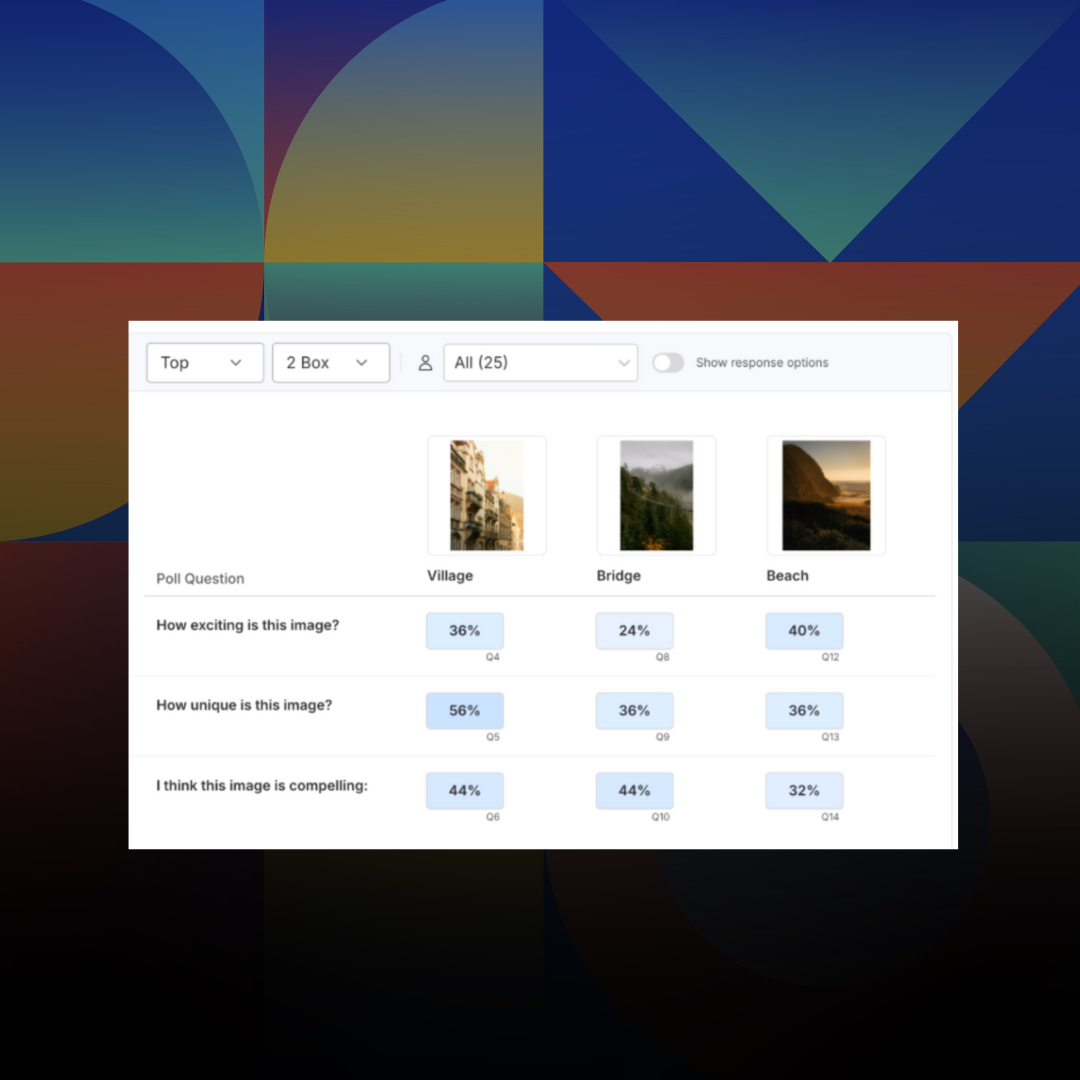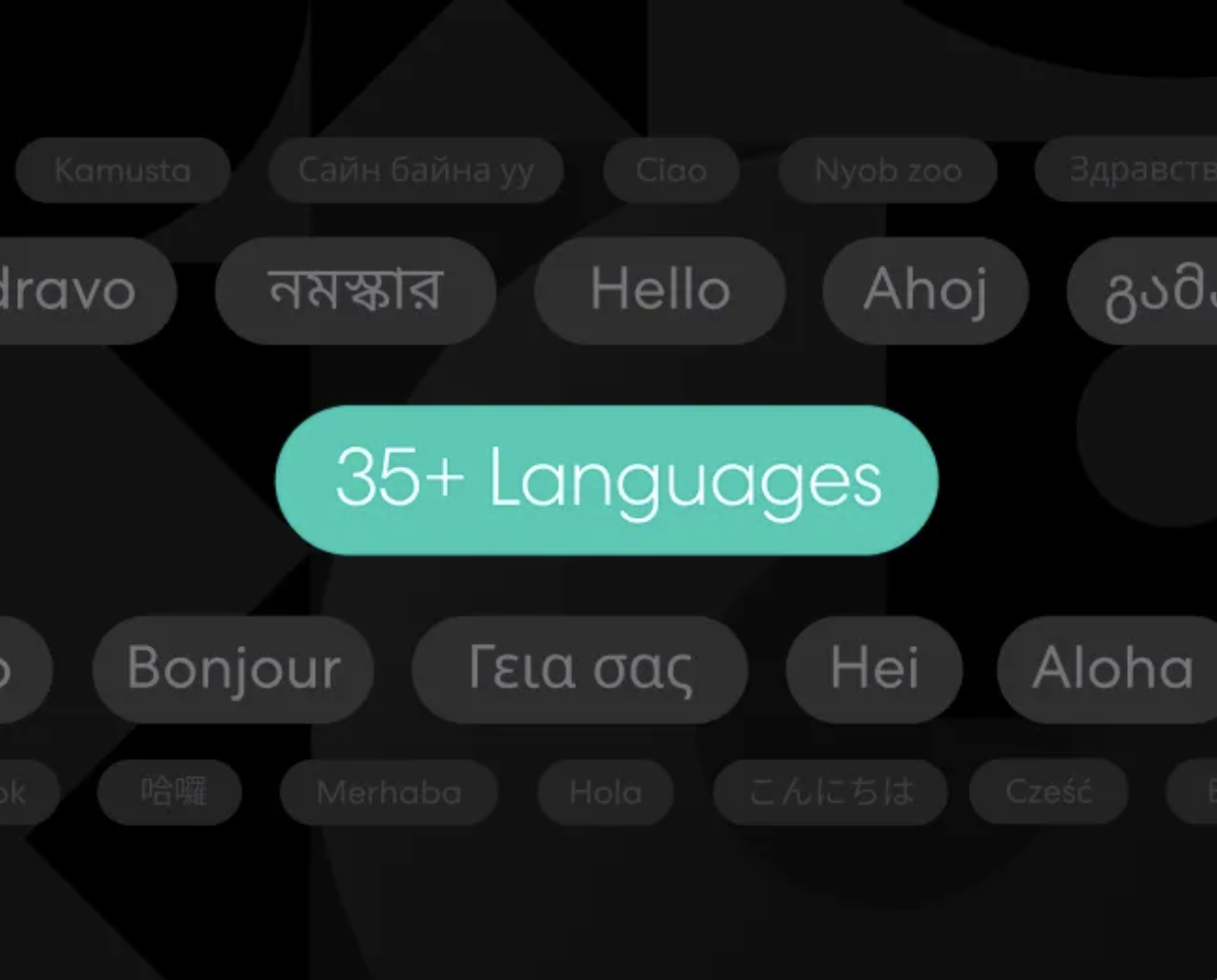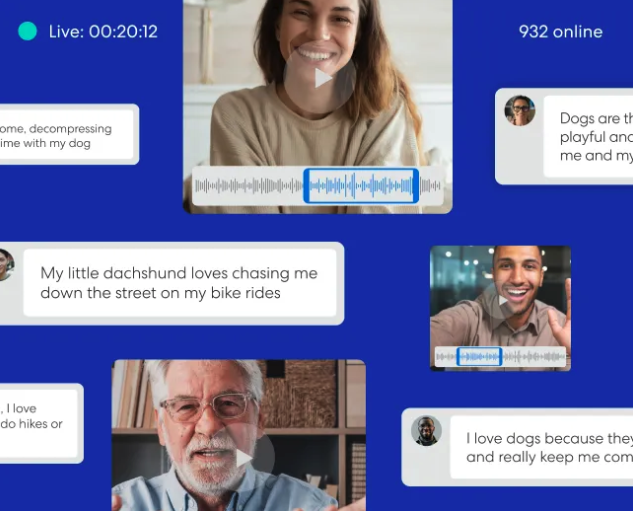
Research 101
Introducing: Poll Comparison - Streamline Concept Testing and Make Better Decisions Faster
Emmet Hennessy
November 24, 2025
Market Research
Articles

Research 101
Introducing: Poll Comparison - Streamline Concept Testing and Make Better Decisions Faster
Emmet Hennessy
November 24, 2025
Market Research
Articles

AI
Purpose-Built for Research AI is Here - a Letter from the CPO
Jessica Dubin
October 21, 2025
Market Research
Articles

AI
Purpose-Built for Research AI is Here - a Letter from the CPO
Jessica Dubin
October 21, 2025
Market Research
Articles

Advanced Research
Unlock Agile Global Insights: Using Remesh Multi-Language Conversations for Research Across Audiences
Customer Success Team
October 14, 2025
Market Research
Articles

Advanced Research
Unlock Agile Global Insights: Using Remesh Multi-Language Conversations for Research Across Audiences
Customer Success Team
October 14, 2025
Market Research
Articles

AI
The Prompt Is the New Moderator Guide
Anthony Lam
September 16, 2025
Market Research
Articles

AI
The Prompt Is the New Moderator Guide
Anthony Lam
September 16, 2025
Market Research
Articles

AI
Building an AI-Ready Research Stack: Beyond Data Preparation
Anthony Lam
September 9, 2025
Market Research
Articles

AI
Building an AI-Ready Research Stack: Beyond Data Preparation
Anthony Lam
September 9, 2025
Market Research
Articles

AI
Agentic AI for Research: A Practical Primer
Dan Reich
September 2, 2025
Market Research
Articles

AI
Agentic AI for Research: A Practical Primer
Dan Reich
September 2, 2025
Market Research
Articles

Advanced Research
Webinar Recap: Unlocking Depth at Scale - Remesh Video for Researchers
Customer Success Team
August 5, 2025
Market Research
Webinars

Advanced Research
Webinar Recap: Unlocking Depth at Scale - Remesh Video for Researchers
Customer Success Team
August 5, 2025
Market Research
Webinars

Transparency in AI: How Remesh Builds Trust Through Responsible Implementation
Ross Coudeyras
July 21, 2025
Articles

Transparency in AI: How Remesh Builds Trust Through Responsible Implementation
Ross Coudeyras
July 21, 2025
Articles

Advanced Research
Webinar Recap: Turning Employee Engagement Insights into Action with Remesh
Customer Success Team
June 16, 2025
Employee Research
Articles

Advanced Research
Webinar Recap: Turning Employee Engagement Insights into Action with Remesh
Customer Success Team
June 16, 2025
Employee Research
Articles
Mastering Rapid Shifts in Consumer Behavior in Real Time
Consumer trends are shifting faster than ever, leaving brands racing to keep up. This article explores how technology and evolving expectations reshape consumer behavior and what it means for businesses.



Consumer trends move faster than ever as technology, social media, and expectations in general reshape how we live. Some trends in consumer behavior are clear-cut and obvious, but to stay ahead of the current, it's good to keep asking how consumer behavior has changed over the years. And, of course, how will it evolve going forward?
The rate of the shifting tide in consumer opinion and expectation is getting faster and faster. A lot of the reason for that is because the rate of information sharing and knowledge sharing is moving faster than ever before. How people discover products, learn about the world, and decide what to buy has changed so much from just a few years ago.
How has consumer behavior changed over the years?
Consumers now expect instant results. Many of us recall waiting a week or more for deliveries, but today, same-day shipping has become the standard. This shift towards instant gratification has significantly altered consumer behavior and expectations. Brands now face a shrinking window to act on market trends, creating pressure to adapt quickly to these accelerated timelines.
Additionally, consumers change their minds quickly, which can mean moving from one brand to another. This constant shift in brand loyalty challenges businesses.
"The rate of change in consumer opinion is getting faster and faster and faster," observes Rob Rocco, EVP of Sales & Professional Services at Remesh. "A lot of the reason for that is because the rate of information sharing and knowledge sharing is getting faster and faster." The ways people find products, learn about the world, and make purchasing decisions have changed noticeably in just a few years.
How consumers meet their needs and wants is also evolving. Consider how many people now watch TV on their phones - an idea that would have seemed impossible in the early 2000s. This change in consumer behavior goes beyond product preferences, encompassing new ways of fulfilling needs and desires.
This need for speed puts considerable pressure on insights professionals to work much faster. Flexibility has become a must for brands. They must be ready to change direction quickly in response to swift shifts in consumer expectations and behaviors. However, with appropriate technology solutions, it's possible to keep up with changing consumer behaviors.
Research methods must keep pace
Historically, brands have relied on traditional market research methods like surveys, interviews, and focus groups to understand their target audiences. But these manual approaches often take weeks or months to yield actionable insights. Modern researchers don't have that luxury.
By the time a traditional research study is completed, the findings may no longer be relevant. Consumer tastes could have already moved on to the next trend. They need to collect and analyze data faster, before the data gets stale and consumers change their minds yet again.
To adapt, market researchers are increasingly turning to AI, machine learning, and other advanced technologies. These tools can rapidly collect and analyze massive volumes of consumer data, delivering insights in real time.
Overall, we need more agile strategies and approaches to test and refine. In the spirit of keeping up and making decisions faster - decisions that will ultimately resonate with that audience in that moment, while it is relevant.
AI-Driven platforms enable brands to stay on top of evolving consumer behavior
Advanced technologies like AI and machine learning offer a path forward for researchers grappling with rapidly shifting consumer trends. AI-driven platforms like Remesh can automate time-consuming tasks and enhance human efforts, allowing researchers to optimize where they focus their energy and attention.
These tools leverage natural language processing to quickly make sense of open-ended survey responses on a massive scale. What used to require days or weeks of manual coding can now happen almost instantly. This rapid analysis ensures that insights remain fresh and actionable, preventing data from becoming stale before it can be utilized.
Moreover, AI-powered conversational interfaces enable researchers to engage with large audiences in real-time, capturing nuanced insights that might be missed by traditional survey methods. This approach not only yields richer data but also allows for immediate follow-up on emerging trends or unexpected responses.
By streamlining data collection and analysis, these platforms free up valuable time for strategic thinking and decision-making.
"Too much time has always been spent on getting to the ‘what’. What are people thinking? What am I going to ask," Rob points out. "Let's get to the ‘so what’ and then ‘now what’ so that we can make a bigger impact."
These platforms solve this problem by automating the "what" stage. This lets researchers focus on the important "so what" and "now what" questions. In a field where being able to change quickly matters, AI-powered research tools help keep up with shifting consumer trends. They're fast and flexible, which means researchers can spend less time gathering data. Instead, they can use more time to interpret the data and develop strategic insights.
Looking ahead: Synthetic data and adaptable research
The change in consumer behavior likely won't slow down. One way to stay on top of it is through the strategic use of synthetic data.
"The adoption of large language models, as a way to fuel or validate answers that are collected from human beings will probably come faster than we think," Rob says. This shift opens up exciting possibilities for market research.
Tapping into AI-generated data could give brands a more comprehensive and multifaceted understanding of their target audiences. This approach allows for the creation of different personas and the ability to aggregate and analyze information from various sources, potentially adding significant value to the research process.
However, synthetic data also presents challenges. It will require new methods to validate and synthesize insights derived from these novel data sources. The key will be finding the right balance between human-generated and synthetic data, ensuring that the insights remain authentic and actionable.
Wrapping up changing consumer behavior
How has consumer behavior changed over the years? Clear answer: A lot. But even with all this change, some things remain constant. The fundamental goal of market research is to empower brands to understand their customers more deeply to ensure their products and services align with their needs and wants.
But the way brands pursue that mission must continually adapt. Researchers need to stay on the cutting edge as new technologies and platforms emerge. AI-driven research platforms like Remesh can help researchers capture real-time insights, analyze data quickly, and make informed decisions before trends shift again. Continuous innovation is no longer optional. It's an existential imperative.
Those who can embrace this rapid pace of change and embrace new technologies to understand consumer trends in the moment while it still matters will be best positioned to win. But it won't be easy. Brands and researchers alike must be willing to challenge conventions, experiment relentlessly, and pivot quickly.
I want to stay ahead of changing consumer behavior!
-
Lorem ipsum dolor sit amet, consectetur adipiscing elit. Suspendisse varius enim in eros elementum tristique. Duis cursus, mi quis viverra ornare, eros dolor interdum nulla, ut commodo diam libero vitae erat. Aenean faucibus nibh et justo cursus id rutrum lorem imperdiet. Nunc ut sem vitae risus tristique posuere.
-
Lorem ipsum dolor sit amet, consectetur adipiscing elit. Suspendisse varius enim in eros elementum tristique. Duis cursus, mi quis viverra ornare, eros dolor interdum nulla, ut commodo diam libero vitae erat. Aenean faucibus nibh et justo cursus id rutrum lorem imperdiet. Nunc ut sem vitae risus tristique posuere.
-
More

Introducing: Poll Comparison - Streamline Concept Testing and Make Better Decisions Faster

.png)

.png)
Read More

.png)
.png)
.png)

.png)

.png)
Learn More

.png)
.png)
.png)


Unlock Agile Global Insights: Using Remesh Multi-Language Conversations for Research Across Audiences

.png)

.png)
Read More

.png)
.png)
.png)

.png)

.png)
Learn More

.png)
.png)
.png)
Stay up-to date.
Stay ahead of the curve. Get it all. Or get what suits you. Our 101 material is great if you’re used to working with an agency. Are you a seasoned pro? Sign up to receive just our advanced materials.




